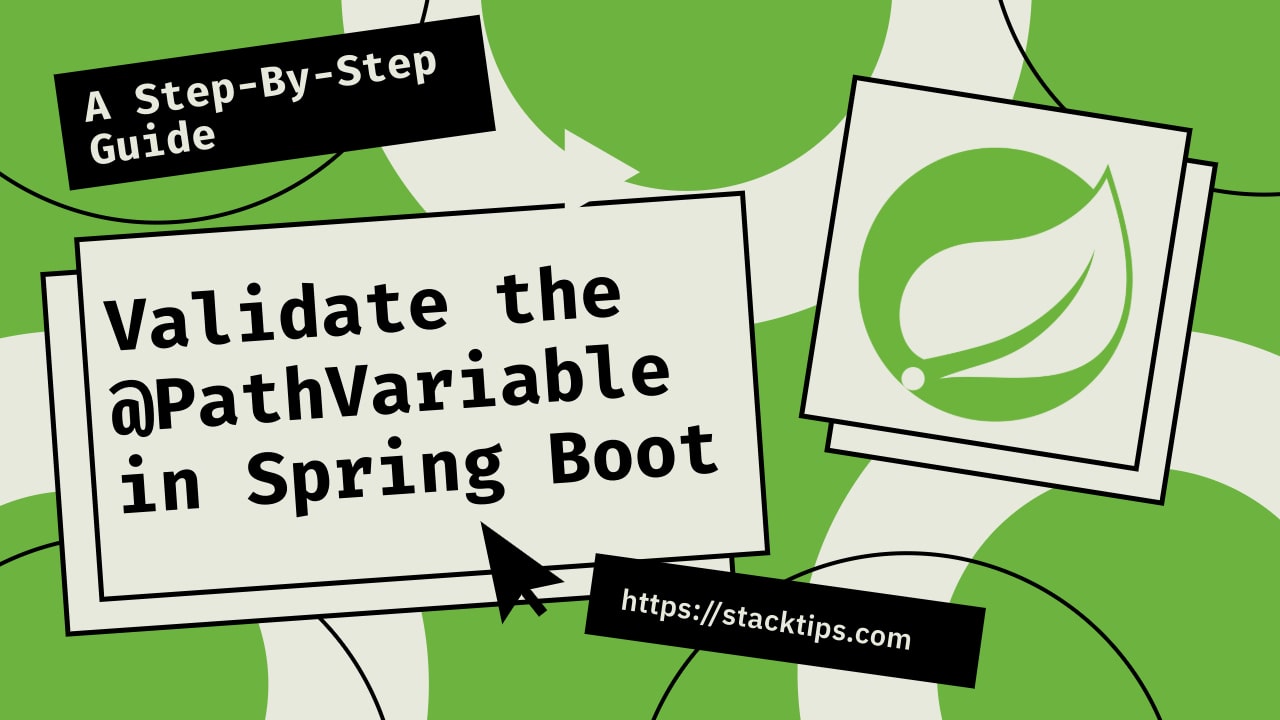

In this short article, we will learn how to use Spring Boot @PathVariable annotation to read an URL template variable. We create a Spring Boot RESTful application to demonstrate the annotation.
@PathVariable is a Spring annotation which indicates that a method parameter should be bound to a URI
template variable.
It has the following optional elements:
With the @PathVariable annotation, we bind the request URL template path variable to the method variable. For instance, with the /100/Ramesh/ URL, the 100 value is bind to the id variable and "Ramesh" value to the name variable.
@GetMapping(path = "/hello-world/{id}/{name}")
public HelloWorldBean helloWorldPathVariable(@PathVariable long id,
@PathVariable(name = "name") String name) {
return new HelloWorldBean(id, name);
}The following example creates a Spring Boot web application which uses @PathVariable. The application receives an URL from which it builds a text response to the client.
There are many ways to create a Spring Boot application. You can refer below articles to create a Spring Boot
application.
>> Create Spring Boot Project With Spring Initializer
>> Create Spring Boot Project in Spring Tool Suite [STS]
Refer project structure or packaging structure in the next step.
This is the project structure of the Spring Boot application that we are going to create -

This is the Maven build file. The spring-boot-starter-web is a starter for building web applications using Spring MVC. It uses Tomcat as the default embedded container.
<?xml version="1.0" encoding="UTF-8"?>
<project
xmlns="http://maven.apache.org/POM/4.0.0"
xmlns:xsi="http://www.w3.org/2001/XMLSchema-instance"
xsi:schemaLocation="http://maven.apache.org/POM/4.0.0 http://maven.apache.org/xsd/maven-4.0.0.xsd">
<modelVersion>4.0.0</modelVersion>
<parent>
<groupId>org.springframework.boot</groupId>
<artifactId>spring-boot-starter-parent</artifactId>
<version>2.0.5.RELEASE</version>
<relativePath />
<!-- lookup parent from repository -->
</parent>
<groupId>net.javaguides.springboot</groupId>
<artifactId>springboot-helloworld-app</artifactId>
<version>0.0.1-SNAPSHOT</version>
<name>springboot-helloworld-app</name>
<description>Demo project for Spring Boot</description>
<properties>
<java.version>1.8</java.version>
</properties>
<dependencies>
<dependency>
<groupId>org.springframework.boot</groupId>
<artifactId>spring-boot-starter-web</artifactId>
</dependency>
<dependency>
<groupId>org.springframework.boot</groupId>
<artifactId>spring-boot-starter-test</artifactId>
<scope>test</scope>
</dependency>
</dependencies>
<build>
<plugins>
<plugin>
<groupId>org.springframework.boot</groupId>
<artifactId>spring-boot-maven-plugin</artifactId>
</plugin>
</plugins>
</build>
</project>Let's create a representation class which we use to return in JSON format:
package net.javaguides.springboot;
public class HelloWorldBean {
private long id;
private String message;
public HelloWorldBean(long id, String message) {
super();
this.id = id;
this.message = message;
}
public long getId() {
return id;
}
public void setId(long id) {
this.id = id;
}
public String getMessage() {
return message;
}
public void setMessage(String message) {
this.message = message;
}
}Let's create a simple HelloWorldController which exposes hello world rest service:
package net.javaguides.springboot;
import org.springframework.web.bind.annotation.GetMapping;
import org.springframework.web.bind.annotation.PathVariable;
import org.springframework.web.bind.annotation.RestController;
@RestController
public class HelloWorldController {
@GetMapping(path = "/hello-world/{id}/{name}")
public HelloWorldBean helloWorldPathVariable(@PathVariable long id,
@PathVariable(name = "name") String name) {
return new HelloWorldBean(id, name);
}
}With the @PathVariable annotation, we bind the request URL template path variable to the method variable. For instance, with the /100/Ramesh/ URL, the 100 value is bind to the id variable and "Ramesh" value to the name variable.
@GetMapping(path = "/hello-world/{id}/{name}")
public HelloWorldBean helloWorldPathVariable(@PathVariable long id,
@PathVariable(name = "name") String name) {
return new HelloWorldBean(id, name);
}Application is the entry point which sets up the Spring Boot application. The
@SpringBootApplication annotation enables auto-configuration and component scanning.
Let's run this Spring boot application from either Eclipse IDE by right click -> Run As -> Java Application.
Or you can use below maven command to run:
mvn spring-boot:run
Hit this URL in a browser - http://localhost:8080/hello-world/100/ramesh